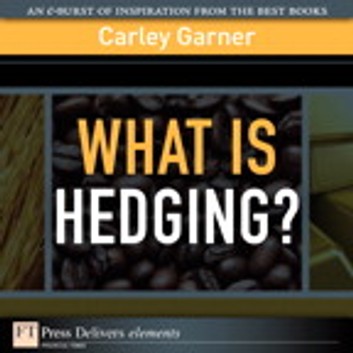Содержание

Rather, reporting a “good” DPR is a balancing act as both high and low ratios have their pros and cons. Company’s industry, maturity, business model and economic environment. Earnings per share are diluted in the formula because this is the most conservative view point. This could lead to a vicious cycle of stock declines that a company might not be able to escape from.
Is It Smart To Buy Euroseas Ltd. (NASDAQ:ESEA) Before It Goes Ex-Dividend? – Simply Wall St
Is It Smart To Buy Euroseas Ltd. (NASDAQ:ESEA) Before It Goes Ex-Dividend?.
Posted: Sat, 04 Mar 2023 12:43:50 GMT [source]
Analysts consider them to be “safer” investments for the same reason. High-yielding stocks are the preferred investment type for investors who prefer a steady stream of income. While it appears to be a very lucrative form of investment, it may not necessarily be so. High-yielding stocks pay out a large chunk of their earnings as a dividend. Such stocks do not demonstrate an inclination towards growth since they distribute the better part of their earnings instead of reinvestment. Reinvest larger portion of net income back into the company to accelerate future growth of the business and capital gains for investors.
The two ratios are essentially two sides of the same coin, providing different perspectives for analysis. Compare – Dividends Ex-Date Vs. Record DateThe dividend ex-date is the deadline for an investor to complete his purchase of the underlying stock in order to receive a dividend payment. On the other hand, top management determines the record date, which is the date on which the investor’s name must appear in the company’s books. Dividends In Arrears DefinitionDividends in Arrears is the cumulative dividend amount that has not been paid to the cumulative preferred stockholders by the presumed date. It might be due to the business having insufficient cash balance for dividend payment or any other reason.
Balance SheetA balance sheet is one of the financial statements of a company that presents the shareholders’ equity, liabilities, and assets of the company at a specific point in time. It is based on the accounting equation that states that the sum of the total liabilities and the owner’s capital equals the total assets of the company. The share price increase is a direct function of how competitive the company is, its positioning, growth strategy, and how it generates profits. The dividend payout ratio instead compares the dividend amount to the company’s earnings per share. As mentioned previously, the dividend payout ratio is a crucial metric to understand a company’s priorities. However, that is only a single consideration when interpreting a company’s dividend payout ratio.
What Is the Dividend Payout Ratio?
The dividend coverage ratio indicates the number of times a company could pay dividends to its common shareholders using its net income over a specified fiscal period. Generally, a higher dividend coverage ratio is more favorable. While the dividend coverage ratio and the dividend payout ratio are reliable measures to evaluate dividend stocks, investors should also evaluate the free cash flow to equity . The dividend payout ratio may be calculated as annual dividends per share divided by earnings per share or total dividends divided by net income.
However, not all companies can routinely increase their dividends. Here’s a closer look at this crucial metric fordividend investing. The dividend coverage ratio measures the number of times a company can pay its current level of dividends to shareholders.
- It differs from the dividend yield, which compares the dividend payment to the company’s current stock price.
- If the company’s ratio is below the mark, we will continue on to Metric 3 of our screener.
- The dividend payout ratio is more commonly used as a measure of dividend as it signifies a company’s ability to pay dividends and also portrays its priorities.
- For that reason, tech companies typically have low dividend payout ratios compared to other industries.
- The payout ratio is a financial metric showing the proportion of earnings a company pays its shareholders in the form of dividends, expressed as a percentage of the company’s total earnings.
Furthermore, we want to invest in companies with a compound annual growth rate of dividends higher than 5%. Then, our dividend payments will be covered against inflation. To perform such a calculation, check the CAGR calculator and input the dividend the company paid 5 years ago and their last yearly dividend. This ratio is easily calculated using the figures found at the bottom of a company’s income statement. It differs from the dividend yield, which compares the dividend payment to the company’s current stock price. EPSEarnings Per Share is a key financial metric that investors use to assess a company’s performance and profitability before investing.
That is because a company that is still growing would channel most or all of its net income toward future growth rather than paying dividends to shareholders. Blue chip stocks, such as Coca-Cola or General Motors, often have relatively higher dividend payout ratios. The Dividend Payout Ratio is the amount of dividends paid to shareholders in relation to the total amount of net income the company generates. In other words, the dividend payout ratio measures the percentage of net income that is distributed to shareholders in the form of dividends. The FCFE ratio measures the amount of cash that could be paid out to shareholders after all expenses and debts have been paid. The FCFE is calculated by subtracting net capital expenditures, debt repayment, and change in net working capital from net income and adding net debt.
How Can I Calculate a Dividend Payout Ratio?
This, in turn, limits the company’s ability to grow dividends in the future. Helpful articles on different dividend investing options and how to best save, invest, and spend your hard-earned money. Customized to investor preferences for risk tolerance and income vs returns mix. Khadija Khartit is a strategy, investment, and funding expert, and an educator of fintech and strategic finance in top universities. She has been an investor, entrepreneur, and advisor for more than 25 years. Retained earnings are a firm’s cumulative net earnings or profit after accounting for dividends.

Therefore, although DPR does not speak much about a company’s financial footing, it does portray its priorities – whether focused on pleasing shareholders or growth. This retained amount goes toward mitigating liabilities, financing developmental endeavours like expansion or R&D, and reserves. The amount, which a company keeps as providence in a particular year, is known as retained earnings.
What is the dividend payout ratio?
At the end of the day, ideal dividend payout ratio, healthy dividend payout ratios are superior to high payout ratios. Simply put, high dividend payout ratios are a sign of poor management. Nevertheless, investors generally lose confidence in companies that reduce dividends, “punishing” them by selling off shares and driving the share price further down. Dividend Payout Ratio, DPR or Payout Ratio, is the amount of dividends paid out to shareholders proportionate to a company’s net income. Put simply, the dividend payout ratio can help you understand what type of returns a company is likely to offer and whether it’s a good fit for the investor’s portfolio.
Keep on working, saving, and investing as much as you can. Take the target amount and divide by the number of companies to get an amount per company. The easy route would be to only include Dividend Arisocrats on this listing. The salary inflation calculator helps you to find out whether your salary is keeping up with the inflation rate.
Enter your email to get notified when new posts are published. See how I’m investing and track my dividend income monthly. It will be interesting to see the long term impact of this pandemic.
Don’t overlook the dividend payout ratio
Generate fixed income from corporates that prioritize environmental, social and governance responsibility. ETFs and funds that prioritize investments based on environmental, social and governance responsibility. You must be a shareholder on or before the next ex-dividend date to receive the upcoming dividend. Investopedia requires writers to use primary sources to support their work.

This investor will be more focused on a high dividend payout ratio. Another type of investor will be more focused on capital gains, so this investor will look for a lower dividend payout ratio with an outlook towards growth. You can infer other information about a company’s strength with the DPR, such as the dividend’s level of sustainability.
But low enough to suggest a https://1investing.in/’s dividend is not at risk. Following a firm’s dividend payment trends over time sheds additional insight. If a company’s DPR rises over time, it could indicate that the company is maturing into a healthy and stable operation.
Step 3. Interpretation of Payout Ratio and Retention Ratio
The payout ratio is also known as the dividend payout ratio. Its converse, the retention ratio, expresses the percentage of profits earned that is retained by or reinvested in the company. A low DPRmeans that the company is reinvesting more money back into expanding its business. By virtue of investing in business growth, the company will likely be able to generate higher levels of capital gains for investors in the future. Therefore, these types of companies tend to attract growth investors who are more interested in potential profits from a significant rise in share price, and less interested in dividend income.
Don’t Buy Bridge Investment Group Holdings Inc. (NYSE:BRDG) For Its Next Dividend Without Doing These Checks – Simply Wall St
Don’t Buy Bridge Investment Group Holdings Inc. (NYSE:BRDG) For Its Next Dividend Without Doing These Checks.
Posted: Sat, 04 Mar 2023 12:31:50 GMT [source]
This compensation may impact how and where listings appear. Investopedia does not include all offers available in the marketplace. Therefore, it is crucial to contextualise a ratio against possible circumstances when assessing it. Moreover, it is necessary to look at the DPR trends of an organisation rather than in isolation. DPR trends often betray if a company is growing, mature, or falling.
The yield is presented as a percentage, not as an actual dollar amount. This makes it easier to see how much return per dollar invested the shareholder receives through dividends. For example, a growth company like Tesla will not pay out a dividend because they are growing the business as fast as possible.
